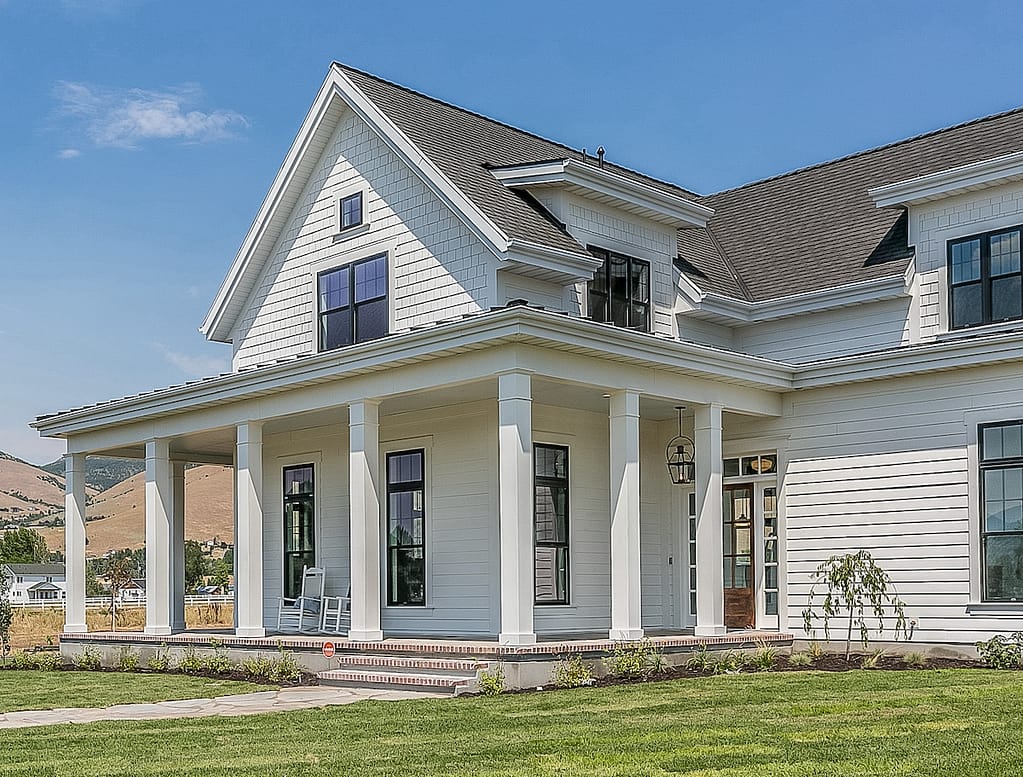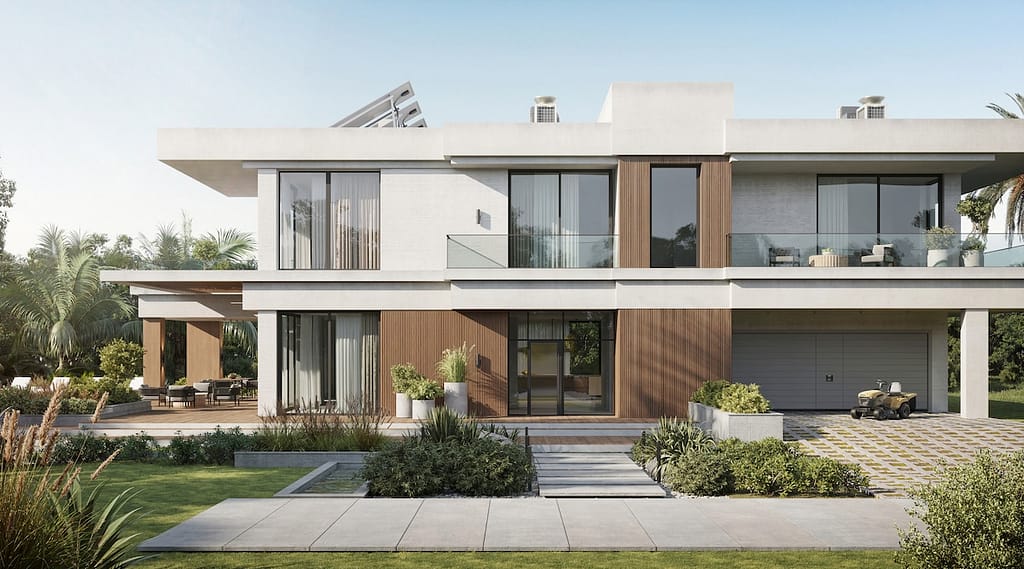New home builders in Texas can learn valuable lessons by revisiting U.S. history. Indeed, a study of styles that emerged throughout the 20th century will prove that changes are cyclical. Additionally, they are a reflection of economy and other factors influencing our world. Texas homebuilders can predict what’s new and what’s next in a competitive marketplace with the knowledge that history repeats itself.
Early 20th Century–American Modern Architecture Emerges
The 1893 Chicago World’s Fair is crediting with prompting the 20th century’s first significant style evolution. New modern home styles replaced the highly decorative Victorian era styles that prevailed in the 19th century. Then, as the 20th century progressed, Art Deco designs of came next. This 1920s style was born out of the modern art movement. Later, expressions of modern styling ushered in Prairie, Bungalow and Craftsman home styles.
1940s–Nationalism Brings Back Decorative, Detailed Styles
Next, with the country involved in World War II, a sentiment of nationalism during the 1940s marked a return to 1800s influences. Colonial-Revival homes feature traditional symmetrical styling and detailed finishes.
Post-War–Function Trumps Form
Just after World War II, Ranch and Cape Code home styles emerged as the emphasis became more about function than form to serve a booming population.
1950s-1970s–Optimism, Self Expression
Then, as the country progressed in its wartime recovery, the introduction of mid-century modern home styles became an expression of optimism. A very wide and low footprint, large and open spaces, floor-to-ceiling windows, and an emphasis on bringing the outdoors in are all hallmarks of the mid-century style.
Following that, self expression became the next national sentiment to make its mark. The ‘60s and ‘70s era was about self-expression, with the introduction of contemporary styles with split-level designs leading the trend. Modern and contemporary styles celebrate the use of natural materials and clean lines. But, design purists note key differences between the two styles. Like modern art, modern architecture uses bold blocks of color in place of patterns. True examples of modern style are much more structured and formal with a focus on function over form. But, contemporary styles use neutral colors in their natural form. Loosened design principles embrace asymmetrical facades and curves and mixed materials.
1980s–Boomers push-back against their parents’ generation
Following that, unadorned, cold and modern styles were out. The Neo-Eclectic styles of the 1980s borrowed influence from a variety of different classical styles. At the same time, an evolution in building materials opened up an opportunity to choose from just about any style imaginable. No longer were New England shake siding and adobe style stucco limited to a particular climate area.
When baby boomers reached their prime home buying years, they heavily influenced these times in home building. Many homes represented the desire to shirk depravity and practicality. But, critics saw some 1980s home styles as a hodgepodge of styles put together without a lot of thought. The term “McMansion” described large, ostentatious homes built to serve a “new money crowd.”
1990s Recession–Practical is Prudent
During the 1990s, as the country faced recession, new home builders in Texas witnessed home preferences change again. Then, everything became about retreating from the opulent ‘80s and getting back to the basics.
History continues to repeats itself in the 21st century.
At the time when we entered a new millennium, the digital age had begun to emerge. The “Smart House” concept was on the rise. Styles shifted back to modern and contemporary. Some of the same Influences from the early and mid-1900s made a comeback.
As we entered the second decade of the 21st century, it was time for another style shift. Minimalism grew in response to the brashness and chaos of urban life. So, the new style guide for home builders in Texas across every home style was minimalism. Traditional homes updates translated to painted brick and removal of ornate or flashy adornments.



Glen-Gery, one of North America’s oldest brick manufacturers, announced the debut of its inaugural 2023 Brick Color of the Year. The Pitt Café Series draws inspiration from 2023’s nature-inspired color and design trends that embody warmth, coziness and texture. The series features four colors ranging from creamy whites to earth tones and brown-gray hues.
Applying the lessons learned:
Choosing windows and doors starts with a choice that suits architectural style.
Greentecture, Restorative Design and Sustainability Will Drive 2024 Home Design
What’s Next?

“Feeling comfortable and grounded” is a top concern.
As we approach the quarter century mark and recover from a world pandemic, the “wellness” factor of a home is key. Texas homebuilders respond with home styles that provide a sense of familiarity and tradition.
European-influenced styles are making a comeback.
Now, as people resume world travel, traditional styles are re-emerging. If it’s time to move on from Modern Farmhouse, then new interpretations of Spanish Colonial pose to answer those still learning toward white and rustic.
Also showcasing rustic yet elegant simplicity with warm and welcoming atmosphere, Country French is returning. New home builders in Texas express French country style using stone, brick or stucco in neutral beige, gray or taupe. Popular greens and blues used inside our homes make their way outside in the form of colored wooden shutters.
Bungalow Styles Connect With Nature
Also pandemic-inspired, a home’s connection to nature is more than ever a top priority that new home builders in Texas recognize. This brings back a fascination with the early iterations of the California Bungalow style. A spin on the American Craftsman style, the style is defined by overhanging roofs, generous use of porches, and that golden ticket–a connection to nature. Modern bungalows continue to be defined by their low-pitched gabled or hipped roofs.



Updated Interpretations of Modern and Contemporary
Once again, the evolution of building products makes any and every look attainable. And, many products are no longer subject to previous challenges. Even “industrial” style is on the rise again, with simple aesthetics that emphasize materials like concrete and exposed ductwork. The classic design principles of these styles paired with warmer whites and lighter woods delivers a new look.
The Bottom Line: Texas homebuilders must do their research to deliver fresh home styles. It is vital to take care in precisely delivering the details that define the style choice! Material selections, landscaping style and proportion all contribute to curb appeal. Design consistency that blurs the line between outside and inside is the name of the game.
See the original version of this article in Building Savvy magazine
